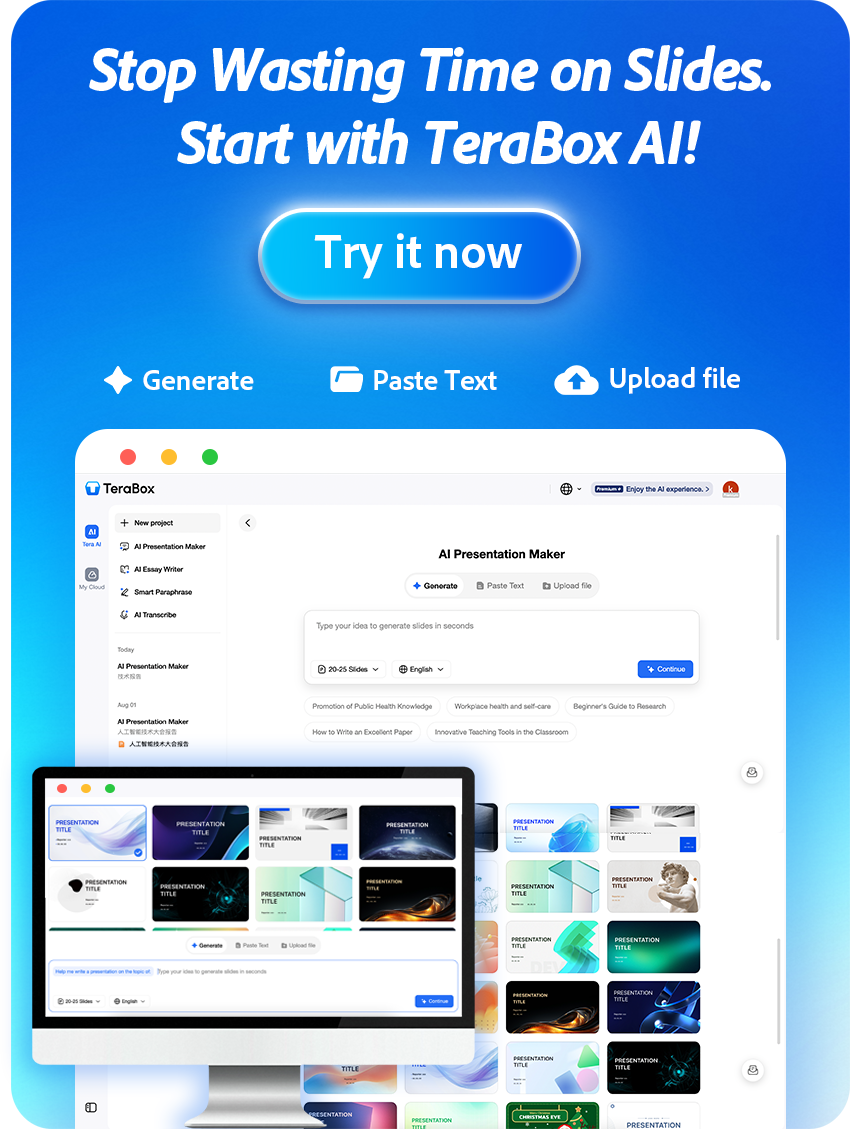If you’re passionate about photography, choosing the best laptop for photo editing can drastically improve your editing speed, color accuracy, and overall workflow efficiency. The right laptop helps you open large RAW files faster, produce more accurate previews on-screen, and move through edits in Photoshop, Lightroom or Capture One with less waiting and fewer crashes. Affordability doesn’t mean you have to compromise on essential features—many laptops today pack powerful CPUs, dedicated GPUs, and high-quality displays while staying wallet-friendly.
This guide walks you through the core specs to prioritize (processor, RAM, GPU, storage, and screen), shows affordable yet capable laptops that handle professional-level editing, and gives practical tips for maintaining top-notch performance over time. Read on for a quick decision checklist you can use while shopping.
In today’s digital workflow, selecting the right laptop for photo editing matters more than ever. As a photographer or designer, your laptop is the primary device that turns raw captures into finished images, so it must reproduce color faithfully, keep responsiveness during complex edits, and accelerate routine tasks like exporting and batch processing. The best laptop for photo editing supports high-resolution files and modern editing suites without forcing you to wait for renders or compromise on color accuracy.
With dozens of laptops marketed to creatives, the choice can feel overwhelming. The right pick, however, can drastically improve your editing speed, color accuracy, and overall workflow efficiency — and affordability doesn’t have to mean sacrificing essential features. This guide breaks down what to prioritize in hardware and display, compares budget versus performance-focused builds, and highlights affordable options that deliver professional-level results.
What you’ll learn in this guide:
- Which components (processor, RAM, GPU, storage, and display) most affect editing and why.
- How to choose between casual and professional setups based on your typical tasks.
- Top affordable laptops that balance price and performance for photo work.
- Practical maintenance tips to keep your device fast and color-accurate over time.
Watch: a quick video demo comparing color accuracy and performance between two popular editing laptops —
The Impact of Your Laptop on Photo Editing Performance
Your laptop directly shapes how fast and accurately you can edit photos. When hunting for the best laptop for photo editing, focus first on the components that drive real-world responsiveness: the processor (CPU), RAM, and graphics. Together these determine how quickly large RAW files open, how smoothly you can scrub through edits and previews, and how effectively you can multitask while running Photoshop, Lightroom, or Capture One.
Concrete differences you’ll notice in daily work:
- Processor / CPU: A modern multi-core processor (for example, mid-to-high-end Intel Core or AMD Ryzen chips) speeds up exports, lens corrections and batch processing. An Intel Core i5 or AMD Ryzen 5 handles basic to intermediate edits fine; step up to an i7/Ryzen 7 or higher when you frequently work with very large images, panoramas, or heavy layer-based PSD files.
- RAM: More RAM reduces swapping and keeps previews responsive. For comfortable professional work, 16GB is a good baseline; 32GB or more helps if you keep many apps and large files open simultaneously.
- Graphics & graphics card: A dedicated GPU (Nvidia GeForce GTX/RTX or comparable) accelerates GPU-accelerated filters, real-time previews and some export paths. Modern apps increasingly use the GPU, so a capable graphics card improves interactivity and color rendering on-screen.
How this maps to types of users:
- Casual editors / social-sized images: A laptop with a mid-range CPU, integrated graphics, and 8–16GB RAM is often enough for cropping, minor retouching and color tweaks.
- Semi-pro / enthusiast: Look for at least an Intel Core i7 or AMD Ryzen 7, 16GB RAM (preferably 32GB upgradeable), and a mid-range dedicated GPU for smoother previews and faster exports.
- Professional workflows: If you batch-process hundreds of RAW files, work with large files (50+MP), composite-heavy PSDs, or perform advanced color grading, prioritize a high-core-count CPU, 32GB+ RAM, and a powerful GPU such as GeForce RTX-class models to ensure enough power for demanding tasks.
Quick hardware checklist for better editing performance:
- CPU: recent multi-core Intel Core / AMD Ryzen — more cores = faster exports.
- RAM: 16GB minimum; 32GB+ for heavy multitasking and large files.
- GPU: dedicated graphics card (Nvidia GeForce RTX series recommended when possible).
- Storage: SSD for snappy file access and app load times (use larger or secondary storage for archives).
- Display: color-accurate screen to trust what you see (covered in the Display section).
Keep in mind that software support matters: current versions of Photoshop and Lightroom leverage both CPU and GPU differently, so check each app’s GPU acceleration support when comparing laptops. Choosing the right balance of processor, ram, and graphics will make editing faster, reduce frustrating lag, and let you focus on creative decisions rather than waiting on your machine.
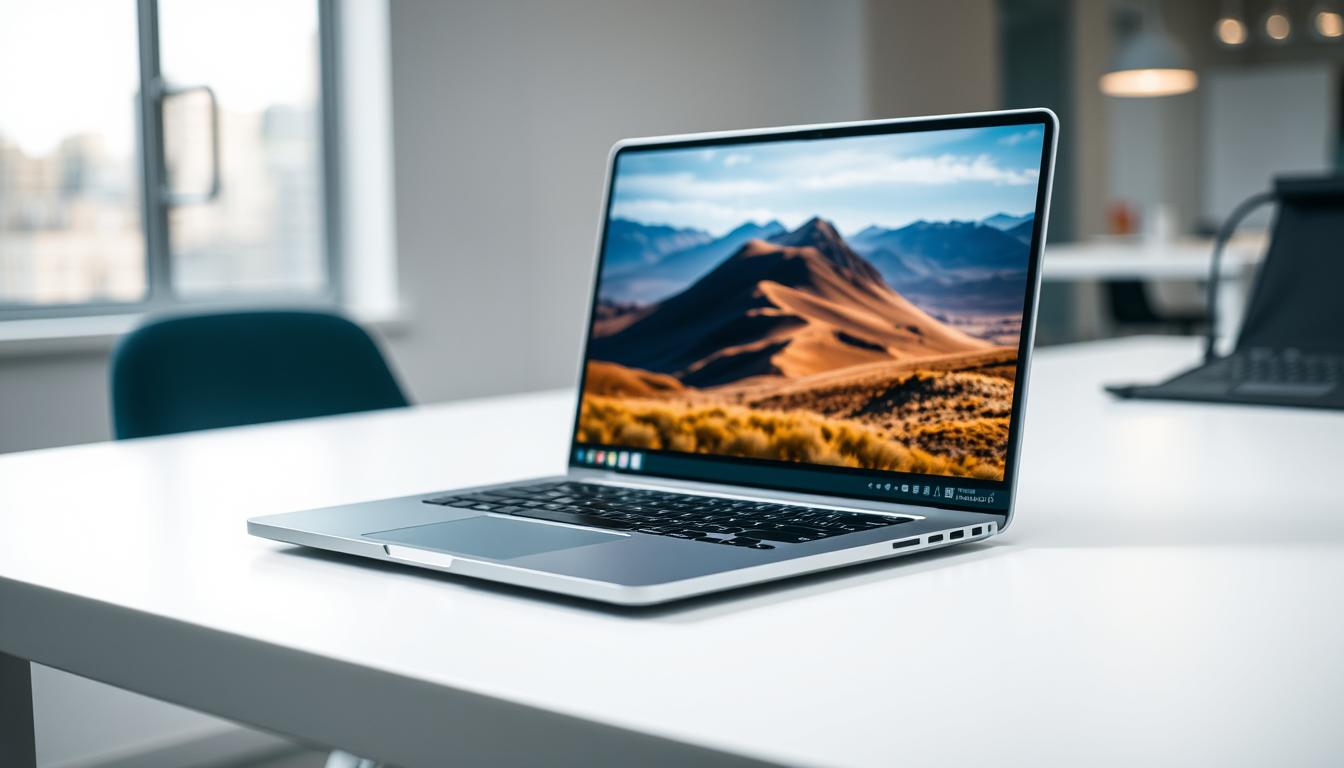
Key Features to Look for in a Laptop for Photo Editing
Choosing the best laptop for photo editing means prioritizing a handful of hardware and display characteristics that directly affect how quickly you work and how accurately your images render. Below are the core features, practical benchmarks, and who benefits most from each so you can match a laptop to your editing needs.
1)Processor & RAM: Smooth handling of large RAW files.
Why it matters: The processor (CPU) and ram determine how fast your machine can decode RAW files, apply complex adjustments, and export edits. Exports, lens corrections, and batch operations are CPU-heavy; switching between large images and multiple apps relies on RAM.
Practical benchmarks:
- Casual editing: Intel Core i5 or AMD Ryzen 5 + 8–16GB RAM — good for social-sized images and light retouching.
- Semi-pro: Intel Core i7 / AMD Ryzen 7 + 16GB (upgradeable to 32GB) — ideal for frequent RAW editing, larger files, and smoother multitasking.
- Professional: high-core-count Intel Core i7/i9 or AMD Ryzen 7/9 + 32GB+ RAM for batch processing, large layered PSDs and advanced compositing.
Tip: Look for laptops with upgradeable RAM or high-memory factory options if you expect your workload to grow.
2)Graphics & GPU: Accurate color rendering and fast previews.
Why it matters: A dedicated GPU accelerates GPU-enabled filters, live previews, and certain export operations in modern editing apps. It also helps drive external displays and maintain responsiveness when zooming and panning high-resolution images.
Practical benchmarks:
- Integrated graphics (Intel/AMD/Apple silicon): fine for basic tasks and many Lightroom operations but may lag with complex real-time previews.
- Dedicated mid-range GPU: Nvidia GeForce GTX or entry-level GeForce RTX — noticeably smoother previews and better handling of 4K images.
- High-end GPU: GeForce RTX 30/40-series (or equivalent workstation GPUs) for heavy realtime effects, large canvases and color-accurate workflows.
Note: Current versions of Photoshop, Lightroom and Capture One increasingly use GPU acceleration — check each app’s support for your chosen GPU. For Nvidia users, GeForce RTX models offer strong performance for accelerated tasks.
3)Display Quality: High resolution, wide color gamut (sRGB/AdobeRGB/DCI-P3).
Why it matters: Your display is where you judge color, contrast and fine detail. An accurate screen reduces surprises when you print or publish images online.
What to look for:
- Resolution: 1440p and 4K screens show finer detail — useful for retouching and zoomed-in work.
- Color gamut: Aim for 100% sRGB at minimum; 90%+ AdobeRGB or wide DCI-P3 coverage is preferable for print-focused or professional color work.
- Panel type: IPS or OLED panels usually deliver better viewing angles and color accuracy than basic TN panels.
- HDR: Helpful for improved contrast and highlights, though calibration and consistency matter more for accurate edits.
Who benefits: Photographers and retouchers who need reliable color reproduction (studio, portrait, product, and print workflows) should prioritize a laptop with a high-quality, color-accurate screen or plan to use an external color-calibrated monitor.
4)Storage Options: SSDs for speed; consider hybrid storage for capacity.
Why it matters: Storage affects how fast applications open, how quickly files load, and how responsive your system feels with large catalogs.
Recommendations:
- Primary drive: NVMe SSD (PCIe) for the OS, apps and active catalogs — dramatically faster than HDDs for load times and caching.
- Capacity: 512GB is a reasonable starting point for many users; 1TB+ is recommended if you keep large RAW libraries on the device. Use external drives or NAS for long-term archives.
- Hybrid options: Some laptops pair an SSD with a larger HDD for cheaper mass storage — a practical compromise for budgets.
Quick note on external monitors: For color-critical work, even the best laptop screen can be supplemented by an external, color-calibrated monitor. If you plan to use one, check your laptop’s ports (Thunderbolt/USB-C, HDMI) and GPU capability to drive higher-res external displays.
Quick spec checklist (copy/paste while shopping)
- CPU: Recent multi-core Intel Core i7/i9 or AMD Ryzen 7/9 (or high-end Apple silicon) — more cores = faster processing.
- RAM: 16GB minimum; 32GB recommended for pro workflows.
- GPU: Dedicated graphics (GeForce RTX recommended for heavy use).
- Storage: NVMe SSD, 512GB minimum, 1TB+ preferred for RAW libraries.
- Display: IPS/OLED panel, 1440p or 4K, 100% sRGB and high AdobeRGB/DCI-P3 coverage for color accuracy.
- Ports: Thunderbolt/USB-C, SD card slot (useful for photographers), enough USB-A for peripherals.
Performance reminder: pairing a capable processor, ample ram, a solid graphics card, and an SSD will give you the smoothest editing experience — especially when working with very large image files or running multiple editing tasks at once.
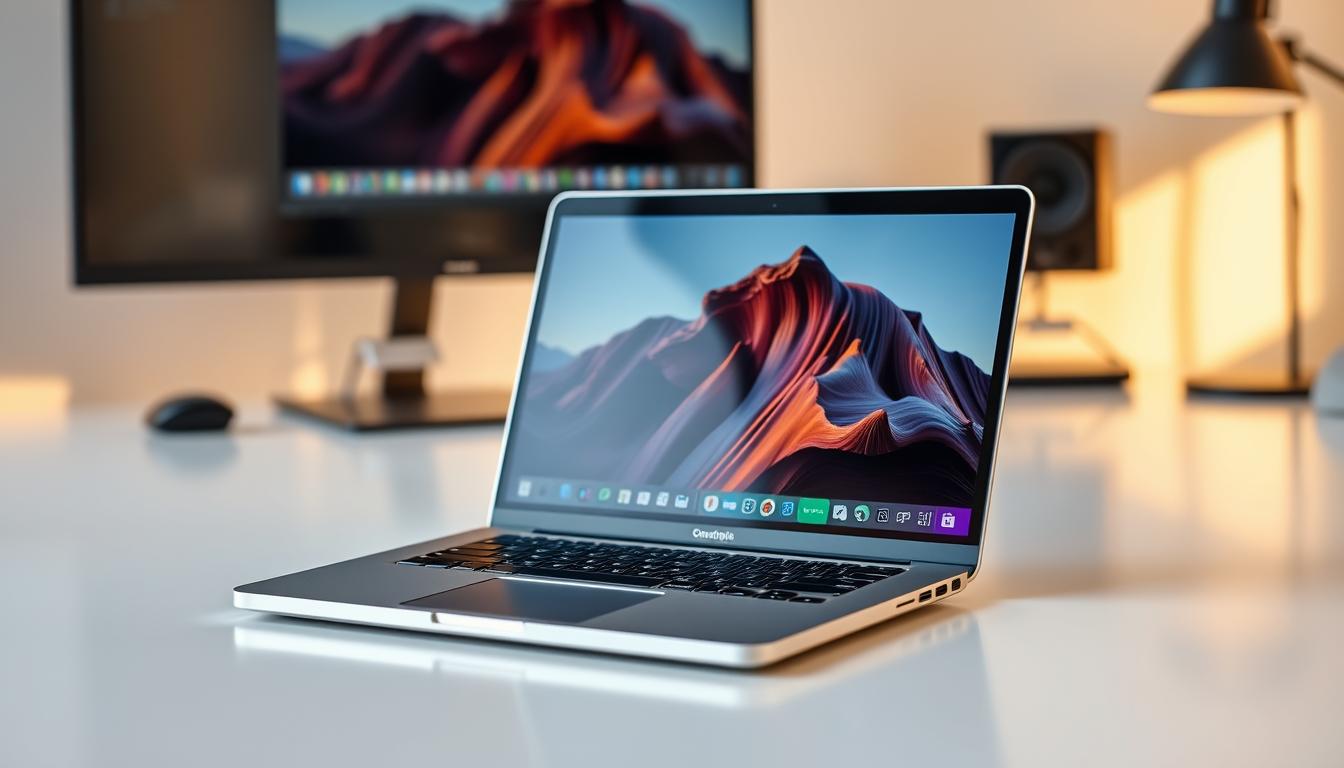
Top Affordable Laptops Good for Editing Photos
Finding the best laptop for photo editing doesn’t have to break the bank. Plenty of laptops deliver the processing power, color-accurate displays, and fast storage you need for professional-level editing while staying within a reasonable price range. Below are 6 carefully selected, affordable models (covering travel-friendly to desktop-replacement use) with brief specs, approximate price bands, pros, cons, and who each model is best for.
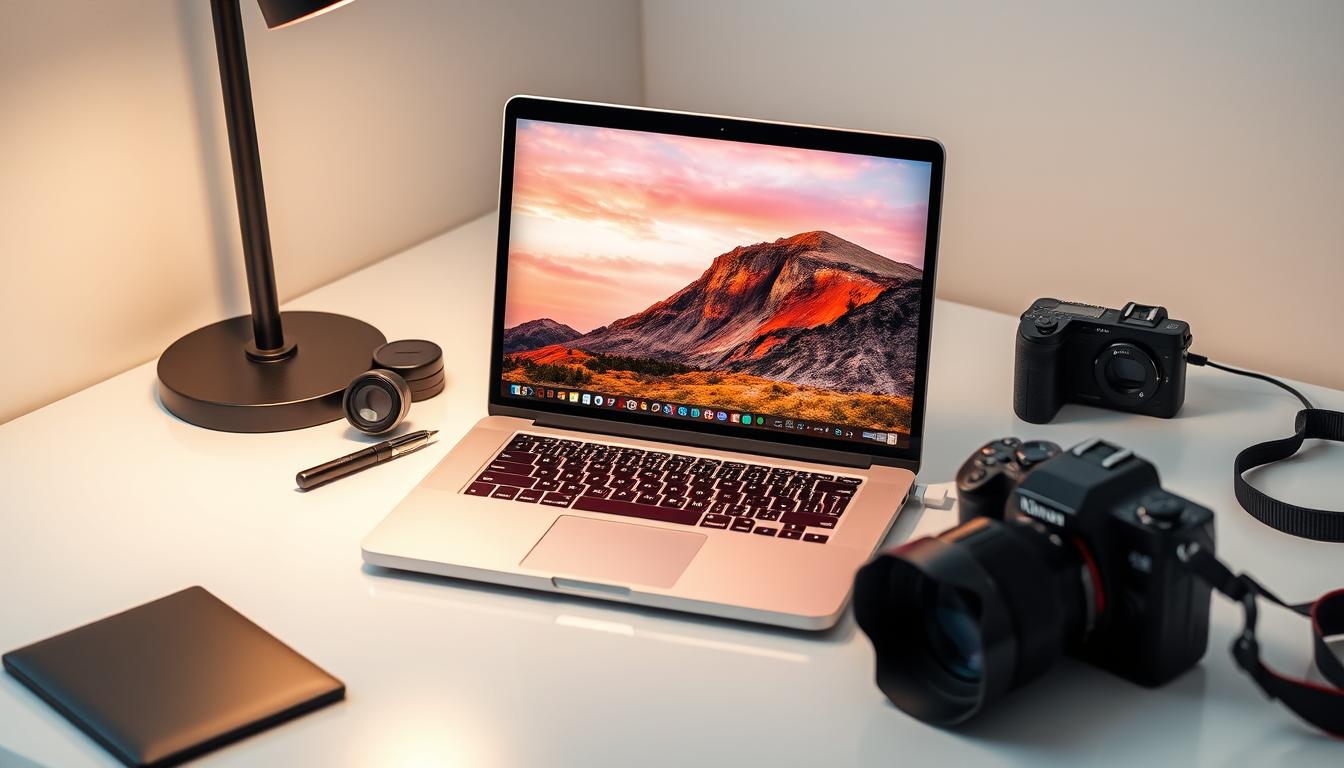
Apple MacBook Air (13-inch, M4)
Approx. price: $999–$1,299 (base to mid configs)
- Key specs: Apple M4 chip, 13-inch Retina display, 8GB/16GB RAM, 256GB–1TB SSD
- Pros: Excellent color-accurate Retina screen, outstanding battery life, very portable; macOS integrates tightly with Lightroom/Photoshop.
- Cons: Limited internal upgradability (RAM often fixed), base storage can be small for large RAW libraries; some pro tools still favor Windows for GPU options.
- Best for: Travel photographers and editors who prioritize portability, battery life and color-accurate screen in a compact laptop.
Asus ProArt P16 (H7606)
Approx. price: $1,199–$1,799 depending on config
- Key specs: 16-inch 4K or high-res screen, Intel Core i7 options, 16GB/32GB RAM, 512GB–1TB SSD, dedicated GPU options
- Pros: Creator-focused display (factory-calibrated color), powerful CPU options and upgradeable memory; built for color-critical workflows.
- Cons: Heavier than ultraportables; higher-end configs can push beyond “affordable” territory.
- Best for: Studio-based photographers and creatives who need a color-accurate 16-inch laptop with desktop-class performance.
Acer Swift X / Acer Swift 3 (creator configs)
Approx. price: $699–$1,099
- Key specs: 14–16 inch IPS displays with good sRGB coverage, Intel Core or AMD Ryzen CPUs, 16GB RAM options, 512GB SSD, some configs include GeForce GTX/RTX or Nvidia MX-series GPUs
- Pros: Strong value — decent CPU/GPU balance, lightweight, and typically includes SSD as standard.
- Cons: Mid-range GPUs less powerful than full GeForce RTX workstation-class cards; display may not match high-end ProArt or MacBook panels for gamut.
- Best for: Enthusiasts and budget-conscious pros who need a portable laptop capable of solid editing performance without a premium price.
Lenovo Legion Slim / IdeaPad Creator
Approx. price: $899–$1,399
- Key specs: 14–16 inch high-res IPS displays, Intel Core i7 or AMD Ryzen 7 options, 16GB–32GB RAM, 512GB–1TB SSD, GeForce RTX-class GPUs available
- Pros: Excellent performance per dollar when equipped with GeForce RTX GPUs; good thermal designs for sustained workloads.
- Cons: Some gaming-oriented chassis may be heavier; battery life varies with GPU load.
- Best for: Photographers who also do occasional video work or need extra GPU horsepower for complex real-time previews.
Dell XPS 15 (base creator configs)
Approx. price: $1,099–$1,799
- Key specs: 15.6-inch 3K/4K display options (high color gamut), Intel Core i7 CPUs, 16GB–32GB RAM, 512GB–1TB SSD, optional mid-range dedicated GPU
- Pros: One of the best laptop screen panels in its class for color fidelity; premium build and good port selection.
- Cons: Premium price at higher configs; heavier than ultraportables.
- Best for: Creators who want a balanced, color-accurate 15-inch laptop that performs well in both studio and on-the-go editing.
HP Envy 14 / Spectre x360 (creator editions)
Approx. price: $899–$1,599
- Key specs: 14–15 inch high-res OLED/IPS screens (select configs), Intel Core i5/i7, 16GB RAM, 512GB SSD, Nvidia GTX/RTX options on some models
- Pros: Attractive design, often includes touch/OLED display options for deep blacks and vivid color; solid portability.
- Cons: OLED can require careful calibration for print work; some configs limited in ports.
- Best for: Photographers looking for a stylish, portable laptop with very good screen options and strong all-around performance.
Why these laptops make sense for photo editors: each model balances a capable processor, sufficient ram, fast ssd storage and a decent GPU or integrated graphics to keep previews and exports moving. Prices vary by configuration—aim for at least 16GB RAM and a 512GB SSD on models you plan to use for serious photo work.
| Feature | Apple MacBook Air (M4) | Asus ProArt P16 | Acer Swift X | Lenovo Creator / Legion Slim | Dell XPS 15 | HP Envy / Spectre |
|---|---|---|---|---|---|---|
| Display | 13″ Retina | 16″ 4K / High Gamut | 14–16″ IPS | 14–16″ IPS | 15.6″ 3K / 4K | 14–15″ OLED / IPS |
| Processor | Apple M4 | Intel Core i7 | Intel / AMD | Intel / AMD | Intel Core i7 | Intel Core i5 / i7 |
| RAM | 8GB / 16GB | 16GB / 32GB | 8GB / 16GB | 16GB / 32GB | 16GB / 32GB | 16GB |
| Storage | 256GB–1TB SSD | 512GB–1TB SSD | 512GB SSD | 512GB–1TB SSD | 512GB–1TB SSD | 512GB SSD |
| GPU | Integrated (Apple GPU) | Dedicated options | GTX / RTX options | GeForce RTX options | Dedicated optional | Dedicated optional |
| Price Range | $999–$1,299 | $1,199–$1,799 | $699–$1,099 | $899–$1,399 | $1,099–$1,799 | $899–$1,599 |
Next steps: pick the profiles that match how you work — prioritize a color-accurate screen and SSD if you edit on the go, or favor CPU/GPU and more RAM if you batch-process large RAW libraries. For each shortlisted model, check manufacturer pages and recent reviews to confirm current specs and pricing before buying.
Comparing Laptops for Photo Editing: Budget vs Performance
Choosing between budget-friendly and performance-focused laptops comes down to the kind of editing work you do and how much value you place on speed, color accuracy and long-term flexibility. High-end models deliver more consistent, faster results for professional workloads, while budget options can be perfectly adequate for everyday tasks — if you accept certain trade-offs.
What you gain with higher-performance models:
- Faster exports and batch processing: A more powerful processor and extra cores shorten export times on large RAW libraries and complex edits — important if you routinely process hundreds of images.
- Better multitasking: More RAM (32GB+) reduces swapping and keeps large catalogs and multiple apps responsive.
- Faster previews and GPU-accelerated effects: A stronger graphics card (for example, GeForce RTX-class) improves real-time previews when using GPU-accelerated filters or working with 4K imagery.
- Superior display and color accuracy: Top-tier models often include factory-calibrated, wide-gamut displays that simplify color-critical work and minimize calibration time.
Where budget laptops make sense:
- Everyday edits and social-sized images: Cropping, basic retouching, color corrections, and exporting for web/social can be handled well on mid-range chips (Core i5 / Ryzen 5) with 8–16GB RAM and an SSD.
- Portability and battery life: Many budget ultraportables prioritize battery life and lightness; they’re ideal when you need a long-lasting machine for location work but don’t require maximum export speed.
- Starter or part-time workflows: If you’re building experience or editing as a hobby, a lower-cost model lets you learn professional tools without a large upfront investment.
Concrete trade-offs (example scenarios):
- If you swap a Core i7 + 32GB RAM setup for a Core i5 + 16GB RAM, you might save roughly $300–$600 depending on the model — but expect slower exports (20–50% longer on heavy batches) and limited headroom for large layered PSDs.
- Choosing integrated graphics over a mid-range dedicated GPU saves cost and improves battery life, but you may see less fluid zooming and slower GPU-accelerated processing in apps that rely on a GeForce RTX or similar card.
Quick decision matrix — which to choose:
- If you edit RAW from DSLRs or medium-format cameras (30MP+), batch process or do composite work: prioritize CPU cores, 32GB RAM, and a dedicated GPU — choose a performance-oriented laptop.
- If you edit social content, crop and retouch, or travel extensively: prioritize portability, battery life and a color-accurate but lighter screen — a mid-range, more affordable laptop is fine.
- If you need a versatile compromise: look for models with a strong CPU, 16GB RAM (upgradeable), NVMe SSD and optional dedicated GPU; these hit a balance of price and long-term performance.
Other practical considerations:
- Battery life: High-performance laptops with powerful GPUs often have shorter battery life under load — consider whether you need sustained on-location editing or mostly studio work.
- Upgradability and ports: A machine with upgradeable RAM/SSD and the right ports (Thunderbolt/USB-C, SD card slot, HDMI) extends usable life and makes connecting external monitors and drives easier.
- Price vs longevity: Spending more upfront on higher performance can reduce the need to replace a machine in a few years if your workload grows.
Bottom line: match the model to your typical tasks. Hobbyists and social-content creators can save money by choosing a budget model that prioritizes battery life and portability, while professionals who rely on consistent performance should invest in a higher-spec laptop to speed up their workflow and reduce frustration.
Tips for Choosing the Perfect Laptop for Your Workflow
Choosing the right laptop for your photo editing workflow is about matching hardware to the software you use and the way you work. Below are practical tips split into two parts: (A) choosing a machine that fits your workflow and (B) keeping that machine running smoothly so it stays fast and color-accurate over time.
1)Choose a laptop that matches your software and workflow needs
- Check software compatibility: Confirm that your main apps (Photoshop, Lightroom, Capture One) run well on the OS you prefer. Most major editing tools are available on both macOS and Windows, but GPU support and plugin availability can vary.
- Balance CPU, GPU and memory: If you use layer-heavy Photoshop files or batch-export many RAW images, prioritize a stronger CPU and at least 16GB of memory (32GB is better for professional workloads). For GPU-accelerated features and smoother previews, choose a model with a dedicated GPU.
- Prioritize the screen and battery life for on-location work: If you edit on the go, a color-accurate screen and long battery life are essential — OLED or high-quality IPS panels with good sRGB/DCI-P3 coverage help you judge color without the studio monitor. Ultraportables tend to offer the best battery life but may trade off raw performance.
- Think about upgradability and ports: A laptop with upgradeable RAM and an extra SSD slot extends longevity. Make sure it has the ports you need (Thunderbolt/USB-C for fast external drives and monitors, an SD card reader for photographers, and enough USB-A for peripherals).
- Storage strategy: Use an NVMe SSD for your OS, apps, and active catalogs for snappy performance; complement with external SSDs or NAS for archive storage of large RAW libraries.
2)Maintain hardware and software for long-term efficiency
- Clean vents and fans regularly: Dust buildup reduces cooling efficiency and can throttle performance. Use compressed air quarterly (or more often if you work in dusty environments) and follow your laptop maker’s service guidance.
- Optimize startup and background tasks: Disable unnecessary startup programs, clear temporary files, and keep catalogs optimized in Lightroom/Photoshop to reduce load on CPU and disk I/O. On Windows, use Task Manager and Storage Sense; on macOS, check Login Items and storage management tools.
- Keep software updated: OS and app updates often include performance improvements and bug fixes — but for mission-critical edits, test major updates on a secondary machine or backup before upgrading.
- Calibrate your display routinely: For consistent color accuracy, calibrate with a hardware calibrator like X-Rite i1Display Pro or Datacolor Spyder every 4–8 weeks (frequency depends on how critical color is to your work). Save calibration profiles and use them across your devices when possible.
- Manage battery and power settings: For longer battery life during shoots, use power-saving modes when not exporting, reduce screen brightness, and disable GPU-accelerated features when on battery. When plugged in, enable performance modes for faster exports.
- Backup and archive workflows: Implement a 3-2-1 backup strategy: 3 copies of your files, on 2 different media types, with 1 offsite. Use fast external SSDs or cloud backups for your active archives so you don’t overload local storage.
Quick maintenance checklist (copy to calendar)
- Weekly: Clear temp files, close unused apps, check available disk space on SSD.
- Monthly: Run catalog optimizations in Lightroom/Capture One; review startup apps.
- Every 4–8 weeks: Calibrate your screen with a colorimeter.
- Quarterly: Blow out vents with compressed air and check for firmware updates.
- Annually: Verify RAM/SSD capacity needs and consider upgrades if your workflow has grown.
By choosing a laptop that supports your primary editing apps and following these maintenance steps, you’ll keep your machine responsive, extend its usable life, and preserve color accuracy — all of which lets you focus on producing better photos instead of fighting performance issues.
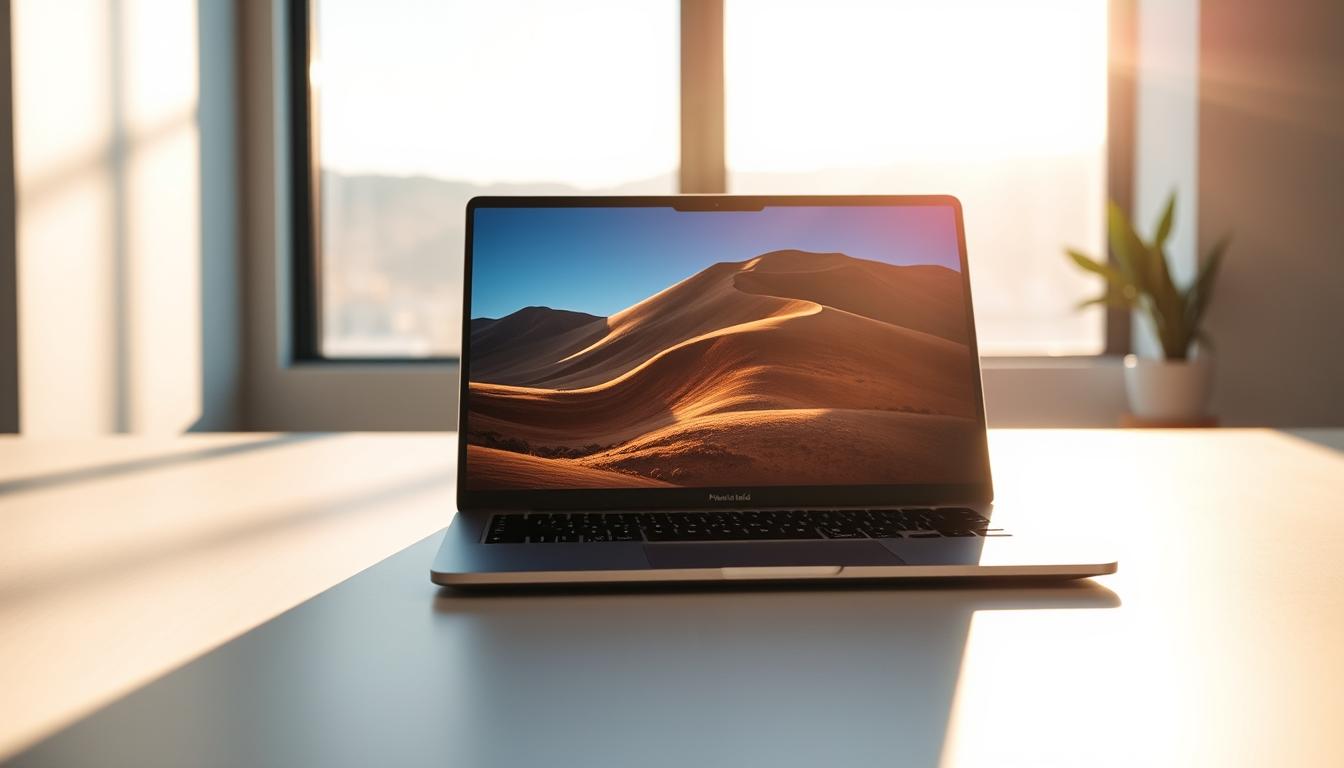
Conclusion
When you’re choosing the best laptop for photo editing, the smartest purchase balances your editing needs, desired lifespan, and budget. Prioritize the features that matter most to your workflow—a capable processor, at least 16GB of RAM for serious work, a color-accurate display, and fast SSD storage—and you’ll see measurable gains in export times, preview responsiveness and color fidelity. Those performance improvements let you spend more time shaping images and less time waiting on your device.
Next steps — a short decision checklist:
- Set your budget and minimum requirements (CPU class, RAM, SSD size).
- Decide which features you can’t compromise (display gamut, upgradability, ports).
- Compare shortlisted laptop models against real-world tasks you perform (batch exports, retouching, tethered shoots).
- Test screens in person when possible and check reviews for sustained performance and battery life.
Investing in the right laptop for your photo editing will improve both your day-to-day workflow and the quality of your final images. If you want a quick help: compare our top picks in the table above or download a one-page buying checklist to take with you while shopping. Pick the model that fits how you work, and it will be a dependable creative partner for years to come.
FAQ
What is the best laptop for photo editing in 2025?
There isn’t a single “best” laptop for everyone in 2025 — the right choice depends on your workflow. For pure color-critical studio work and maximum performance, look for current-generation Apple silicon (Pro/Max) MacBooks or Windows workstations with high-core-count Intel/AMD CPUs, 32GB+ RAM, a color-accurate 3K/4K display, and a fast SSD. If portability and battery life matter more, a 13–14″ MacBook or a thin Windows creator laptop with strong single-core processor performance and good color gamut is a better fit. Professionals who need GPU-accelerated previews should pick models with a dedicated graphics card (e.g., GeForce RTX-class or workstation equivalents).
Which laptops are good for editing photos on a budget?
Budget-friendly options that still support serious editing include models like the Apple MacBook Air (base Mac silicon), Acer Swift creator configs, Lenovo IdeaPad Creator, and entry-level Dell XPS or HP Envy creator editions. Aim for at least a mid-range CPU (Intel Core i5 / AMD Ryzen 5), 16GB RAM, and an NVMe SSD (512GB if possible). These laptops strike a balance between price and performance for cropping, retouching, and light batch work. For a Windows alternative with a dedicated GPU, look for machines with GeForce GTX/RTX options in the same price bracket.
What specifications should I look for in a laptop for photo editing?
- Keep your OS and editing apps updated, but test major updates before using them on critical projects.
- Use an NVMe SSD for active catalogs, and archive old files to external drives to preserve free space and speed.
- Clean vents and fans periodically to avoid thermal throttling; follow the manufacturer’s maintenance guidance.
- Calibrate your display regularly with a colorimeter (X-Rite i1Display, Datacolor Spyder) to maintain color accuracy.
- Optimize startup apps and background processes to free memory for editing tasks, and consider upgrading RAM if you routinely run out of memory during complex edits.
